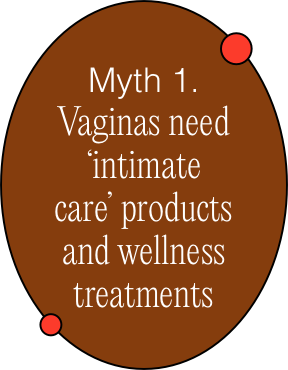Let’s talk vaginas – because they really don’t get talked about enough in a way that isn’t embarrassing or objectifying.
First up: what’s the difference between the vagina and the vulva?
Basically, the vulva is the outer parts of the genitals and the opening to the vagina, the parts you can see, and the vagina itself is one of the inside parts. Yep, one. It’s not a collective term for the whole genital anatomy.
The vagina is a muscular tube that extends from this opening to the cervix (the lower part of the womb). In this image, the only visible part is the vaginal opening – not to be confused with the urethra, where wee comes out, which is just above it.
The vagina is where period blood and discharge comes from, where tampons and menstrual cups are inserted, and where babies are born through (it’s very elastic).
Some transgender women choose to undergo ‘bottom surgery’, which is when a surgeon constructs a vagina for them. These are sometimes referred to as neovaginas and are often constructed using skin from the penis and scrotum, or part of the colon.
Now, let’s debunk some vagina myths.
Some of the ways you can help your immune system are:
- Eat a varied diet with lots of fruit and veg
- Moderate exercise e.g. walking, swimming, yoga
- Stay hydrated e.g. by drinking water
- Manage your stress levels
- Get enough sleep for 8-10 hours a night is recommended for teens
Canesten Thrush External Cream 2% w/w cream contains clotrimazole. Always read the label.
Who has a vagina?
A collection of people with different gender identities, who all have a vagina.
All of the people you see above and below have a vagina. However, not all of them identify or present themselves as female. People who don’t identify as female, might be trans men, non-binary or intersex.
People with DSD (Differences in Sex Development), sometimes called intersex people, are born with reproductive organs and genitals that are different from what’s expected of their chromosomes. For example, they have XY chromosomes, usually associated with being male, but their genitals may look different than expected or have characteristics that are associated with being female.
People who identify as trans or non-binary can access specialist healthcare. Terrence Higgins Trust has a directory of resources for trans and non-binary people.
Whether you have a vagina or not, it’s important to know the facts.
There is still a sense of mystery and taboo surrounding vaginas, which leads to misinformation and shame. It’s very important to spread realistic and healthy attitudes so that everyone is able to feel confident and happy in their bodies, regardless of their experiences.
Canesten Thrush External Cream 2% w/w cream contains clotrimazole. Always read the label.








